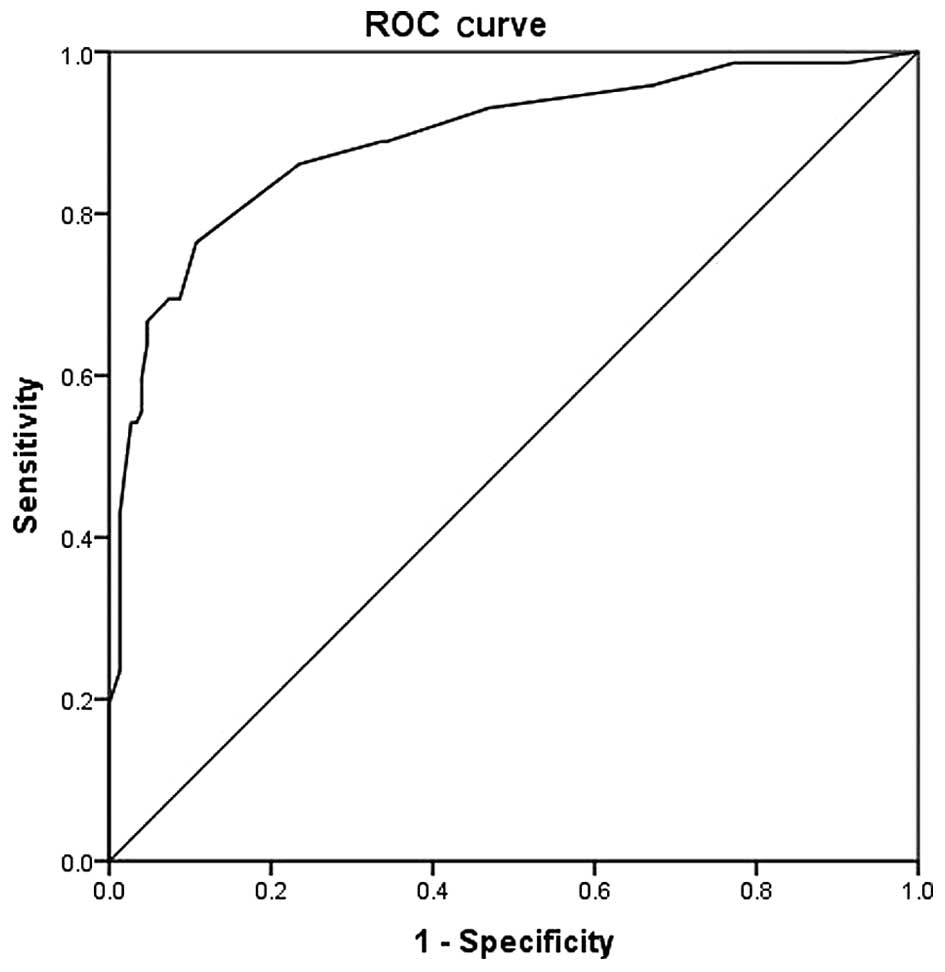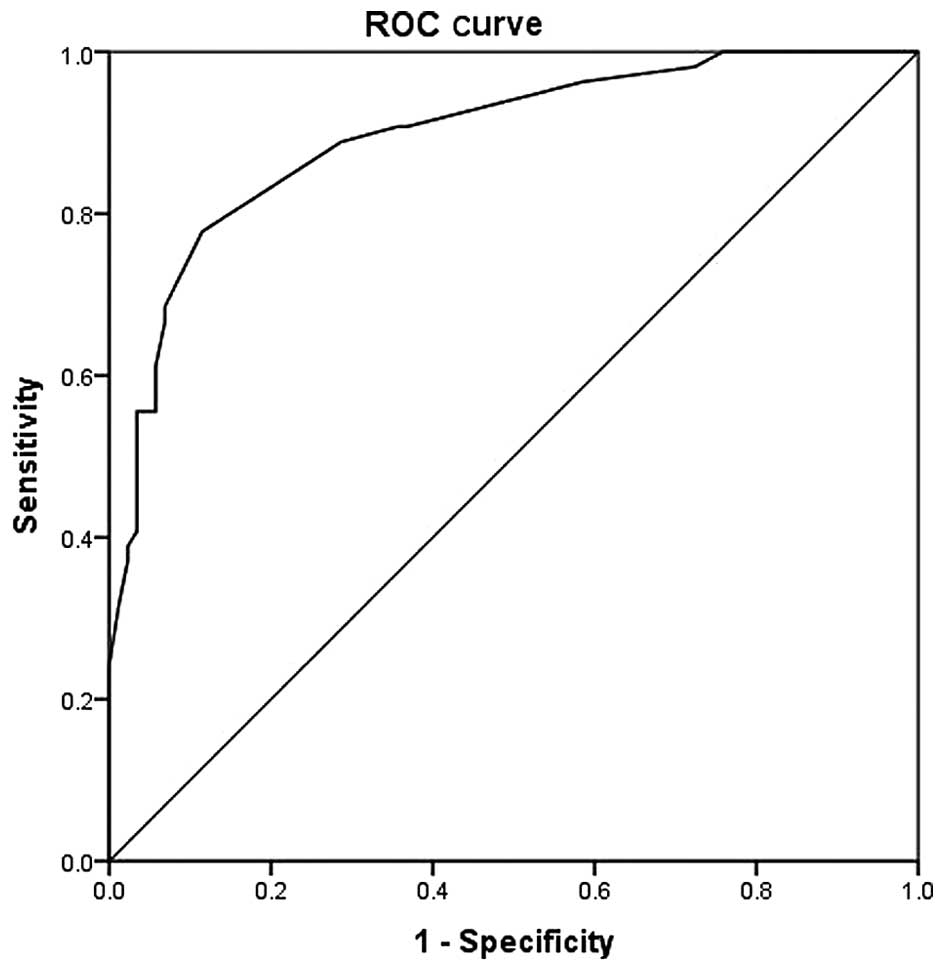|
1
|
Global Initiative for Chronic Obstructive
Lung Disease (GOLD): Global Strategy for the Diagnosis. Management
and Prevention of COPD. 2013.http://www.goldcopd.org/Accessed. October
17–2013PubMed/NCBI
|
|
2
|
Vestbo J, Anderson W, Coxson HO, Crim C,
Dawber F, Edwards L, Hagan G, Knobil K, Lomase DA, MacNee W, et al:
Evaluation of COPD longitudinally to identify predictive surrogate
end-points (ECLIPSE). Eur Respir J. 31:869–873. 2008. View Article : Google Scholar : PubMed/NCBI
|
|
3
|
Celli BR and MacNee W: ATS/ERS Task Force:
Standards for the diagnosis and treatment of patients with COPD: A
summary of the ATS/ERS position paper. Eur Respir J. 23:932–946.
2004. View Article : Google Scholar : PubMed/NCBI
|
|
4
|
Faner R, Tal-Singer R, Riley JH, Celli B,
Vestbo J, Macnee W, Bakke P, Calverley PM, Coxson H, Crim C, et al:
Lessons from ECLIPSE: A review of COPD biomarkers. Thorax.
69:666–672. 2014. View Article : Google Scholar : PubMed/NCBI
|
|
5
|
Engström G, Segelstorm N, Ekberg-Aronsson
M, Nilsson PM, Lindgärde F and Löfdahl CG: Plasma markers of
inflammation and incidence of hospitalisations for COPD. Results
from a population-based cohort study. Thorax. 64:211–215. 2009.
View Article : Google Scholar : PubMed/NCBI
|
|
6
|
Rhim T, Choi YS, Nam BY, Uh ST, Park JS,
Kim YH, Paik YK and Park CS: Plasma protein profiles in early
asthmatic responses to inhalation allergen challenge. Allergy.
64:47–54. 2009. View Article : Google Scholar : PubMed/NCBI
|
|
7
|
Dahl M, Tyboerg-Hansen A, Vestbo J, Lang P
and Nordestgaad BG: Elevated plasma fibrinogen associated with
reduced pulmonary function and increased risk of chronic
obstructive pulmonary disease. Am J Respir Crit Care Med.
164:1008–1011. 2001. View Article : Google Scholar : PubMed/NCBI
|
|
8
|
Thomsen M, Ingebrigtsen TS, Marott JL,
Dahl M, Lange P, Vestbo J and Nordestgaard BG: Inflammatory
biomarkers and exacerbations in chronic obstructive pulmonary
disease. JAMA. 309:2353–2361. 2013. View Article : Google Scholar : PubMed/NCBI
|
|
9
|
Man SF, Connett JE, Anthonisen NR, Wise
RA, Tashkin DP and Sin DD: C-reactive protein and mortality in mild
to moderate chronic obstructive pulmonary disease. Thorax.
61:849–853. 2006. View Article : Google Scholar : PubMed/NCBI
|
|
10
|
Duvoix A, Dickens J, Haq I, Mannino D,
Miller B, Tal-Singer R and Lomas DA: Blood fibrinogen as a
biomarker of chronic obstructive pulmonary disease. Thorax.
68:670–676. 2013. View Article : Google Scholar : PubMed/NCBI
|
|
11
|
Winkler C, Atochina-Vasserman EN, Holz O,
Beers MF, Erpenbeck VJ, Krug N, Roepcke S, Lauer G, Elmlinger M and
Hohlfeld JM: Comprehensive characterisation of pulmonary and serum
surfactant protein D in COPD. Respir Res. 12:292011. View Article : Google Scholar : PubMed/NCBI
|
|
12
|
Lomas DA, Silverman EK, Edwards LD,
Locantore NW, Miller BE, Horstman DH and Tal-Singer R: Evaluation
of COPD Longitudinally to Identify Predictive Surrogate Endpoints
study investigators: Serum surfactant protein D is steroid
sensitive and associated with exacerbations of COPD. Eur Respir J.
34:95–102. 2009. View Article : Google Scholar : PubMed/NCBI
|
|
13
|
Madsen J, Kliem A, Tornoe I, Skjodt K,
Koch C and Holmskov U: Localization of lung surfactant protein D on
mucosal surfaces in human tissues. J Immunol. 164:5866–5870. 2000.
View Article : Google Scholar : PubMed/NCBI
|
|
14
|
Crouch EC: Surfactant protein-D and
pulmonary host defense. Respir Res. 1:93–108. 2000. View Article : Google Scholar : PubMed/NCBI
|
|
15
|
Hoegh SV, Sorensen GL, Tornoe I,
Lottenburger T, Ytting H, Nielsen HJ, Junker P and Holmskov U:
Long-term stability and circadian variation in circulating levels
of surfactant protein D. Immunobiology. 215:314–320. 2010.
View Article : Google Scholar : PubMed/NCBI
|
|
16
|
Antoniu SA: Effects of inhaled therapy on
biomarkers of systemic inflammation in stable chronic obstructive
pulmonary disease. Biomarkers. 15:97–103. 2010. View Article : Google Scholar : PubMed/NCBI
|
|
17
|
Global Initiative for asthma (GINA):
Global Strategy for Asthma Management and Prevention.
2012.http://www.ginasthma.org/Accessed. November
18–2013
|
|
18
|
Ferris BG: Epidemiology Standardization
Project (American Thoracic Society). Am Rev Respir Dis. 118:1–120.
1978.PubMed/NCBI
|
|
19
|
Stenton C: The MRC breathlessness scale.
Occup Med (Lond). 58:226–227. 2008. View Article : Google Scholar : PubMed/NCBI
|
|
20
|
Leth-Larsen R, Nordenbaek C, Tornoe I,
Moeller V, Schlosser A, Koch C, Teisner B, Junker P and Holmskov U:
Surfactant protein D (SP-D) serum levels in patients with
community-acquired pneumonia. Clinical Immunol. 108:29–37. 2003.
View Article : Google Scholar
|
|
21
|
Ilumets H, Mazur W, Toljamo T, Louhelainen
N, Nieminen P, Kobayashi H, Ishikawa N and Kinnula VL: Ageing and
smoking contribute to plasma surfactant proteins and protease
imbalance with correlations to airway obstruction. BMC Pulm Med.
11:192011. View Article : Google Scholar : PubMed/NCBI
|
|
22
|
Foreman MG, Kong X, DeMeo DL, Pillai SG,
Hersh CP, Bakke P, Gulsvik A, Lomas DA, Litonjua AA, Shapiro SD, et
al: Polymorphisms in surfactant protein-D are associated with
chronic obstructive pulmonary disease. Am J Respir Cell Mol Biol.
44:316–322. 2011. View Article : Google Scholar : PubMed/NCBI
|
|
23
|
Sin DD, Man SF, Marciniuk DD, Ford G,
FitzGerald M, Wong E, York E, Mainra RR, Ramesh W, Melenka LS, et
al: The effects of fluticasone with or without salmeterol on
systemic biomarkers of inflammation in chronic obstructive
pulmonary disease. Am J Respir Crit Care Med. 177:1207–1214. 2008.
View Article : Google Scholar : PubMed/NCBI
|
|
24
|
Ju CR, Liu W and Chen RC: Serum surfactant
protein D. Biomarker of chronic obstructive pulmonary disease. Dis
Markers. 32:281–287. 2012. View Article : Google Scholar : PubMed/NCBI
|
|
25
|
Shakoori TA, Sin DD, Ghafoor F, Bashir S
and Bokhari SN: Serum surfactant protein D during acute
exacerbations of chronic obstructive pulmonary disease. Dis
Markers. 27:287–294. 2009. View Article : Google Scholar : PubMed/NCBI
|
|
26
|
Mutti A, Corradi M, Goldoni M, Vettori MV,
Bernard A and Apostoli P: Exhaled metallic elements and serum
pneumoproteins in asymptomatic smokers and patients with COPD or
asthma. Chest. 129:1288–1297. 2006. View Article : Google Scholar : PubMed/NCBI
|
|
27
|
Ou CY, Chen CZ, Hsiue TR, Lin SH and Wang
JY: Genetic variants of pulmonary SP-D predict disease outcome of
COPD in a Chinese population. Respirology. 20:296–303. 2015.
View Article : Google Scholar : PubMed/NCBI
|
|
28
|
Sorensen GL, Husby S and Holmskov U:
Surfactant protein A and surfactant protein D variation in
pulmonary disease. Immunobiology. 212:381–416. 2007. View Article : Google Scholar : PubMed/NCBI
|
|
29
|
Inase N, Ohtani Y, Sumi Y, Umino T, Usui
Y, Miyake S and Yoshizawa Y: A clinical study of hypersensitivity
pneumonitis presumably caused by feather duvets. Ann Allergy Asthma
Immunol. 96:98–104. 2006. View Article : Google Scholar : PubMed/NCBI
|
|
30
|
de Torres JP, Cordoba-Lanus E,
López-Aguilar C, de Muros Fuentes M, de Montejo Garcini A,
Aguirre-Jaime A, Celli BR and Casanova C: C-reactive protein levels
and clinically important predictive outcomes in stable COPD
patients. Eur Respir J. 27:902–907. 2006.PubMed/NCBI
|
|
31
|
Eickhoff P, Valipour A, Kiss D, Schreder
M, Cekici L, Geyer K, Kohansal R and Burghuber OC: Determinants of
systemic vascular function in patients with stable chronic
obstructive pulmonary disease. Am J Respir Crit Care Med.
178:1211–1218. 2008. View Article : Google Scholar : PubMed/NCBI
|
|
32
|
Kushner I, Rzewnicki D and Samols D: What
does minor elevation of C-reactive protein signify? Am J Med.
119:166.e17–e28. 2006. View Article : Google Scholar
|
|
33
|
Tsushima K, Fujimoto K, Yoshikawa S,
Kawakami S, Koizumi T and Kubo K: Hypersensitivity pneumonitis due
to Bunashimeji mushrooms in the mushroom industry. Int Arch Allergy
Immunol. 137:241–248. 2005. View Article : Google Scholar : PubMed/NCBI
|
|
34
|
Um SJ, Lam S, Coxson H, Man SF and Sin DD:
Budesonide/formoterol enhances the expression of pro Surfactant
Protein-B in lungs of COPD patients. PloS One. 8:e838812013.
View Article : Google Scholar : PubMed/NCBI
|
|
35
|
Liu W, Ju CR, Chen RC and Liu ZG: Role of
serum and induced sputum surfactant protein D in predicting the
response to treatment in chronic obstructive pulmonary disease. Exp
Ther Med. 8:1313–1317. 2014.PubMed/NCBI
|
|
36
|
Engström G, Lindberg C, de Gerhardsson
Verdier M, Nihlén U, Anderson M, Svartengren M and Forsman-Semb K:
Blood biomarkers and measures of pulmonary function - a study from
the Swedish twin registry. Respir Med. 106:1250–1257. 2012.
View Article : Google Scholar : PubMed/NCBI
|
|
37
|
Ozyurek BA, Ulasli SS, Bozbas SS,
Bayraktar N and Akcay S: Value of serum and induced sputum
surfactant protein-D in chronic obstructive pulmonary disease.
Multidiscip Respir Med. 8:362013. View Article : Google Scholar : PubMed/NCBI
|
|
38
|
Sin DD, Leung R, Gan WQ and Man SP:
Circulating surfactant protein D as a potential lung-specific
biomarker of health outcomes in COPD. A pilot study. BMC Pulm Med.
7:132007. View Article : Google Scholar : PubMed/NCBI
|
|
39
|
Johansson SL, Tan Q, Holst R, Christiansen
L, Hansen NC, Hojland AT, Wulf-Johansson H, Schlosser A, Titlestad
IL, Vestbo J, et al: Surfactant protein D is a candidate biomarker
for subclinical tobacco smoke-induced lung damage. Am J Physiol
Lung Cell Mol Physiol. 306:L887–L895. 2014. View Article : Google Scholar : PubMed/NCBI
|
|
40
|
Dickens JA, Miller BE, Edwards LD,
Silverman EK, Lomas DA and Tal-Singer R: Evaluation of COPD
Longitudinally to Identify Surrogate Endpoints (ECLIPSE) study
investigators: COPD association and repeatability of blood
biomarkers in the ECLIPSE cohort. Respir Res. 12:1462011.
View Article : Google Scholar : PubMed/NCBI
|
|
41
|
Salameh P, Khayat G and Waked M: Could
symptoms and risk factors diagnose COPD? Development of a Diagnosis
Score for COPD. Clin Epidemiol. 4:247–255. 2012. View Article : Google Scholar : PubMed/NCBI
|












